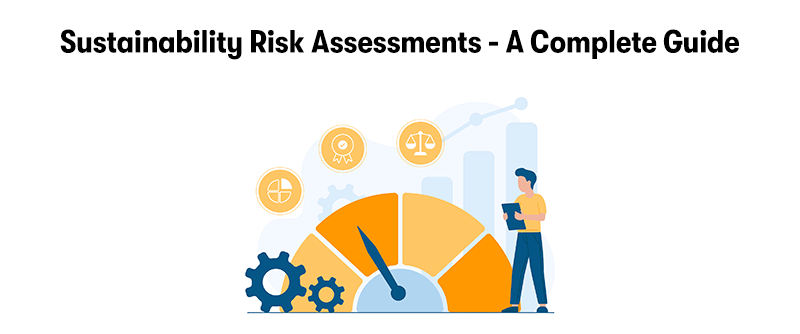Sustainability Risk Assessments - A Complete Guide
Welcome to our deep dive into the world of Sustainability Risk Assessments (SRA), a pivotal tool for businesses in the 21st century. In an era where environmental, social, and governance (ESG) concerns are not just buzzwords but essential components of corporate strategy, understanding SRAs becomes imperative. These assessments serve as a critical bridge, connecting an organisation's operations and the broader impact on our planet and society.
They offer a comprehensive view of potential risks and opportunities, guiding businesses towards responsible and sustainable practices.
As we embark on this exploration, we will uncover the nuances of SRAs and their role in shaping a business's approach to sustainability, illustrating why they are more than just a compliance exercise but a strategic necessity in today's world.
What is a Sustainability Risk Assessment (SRM)?
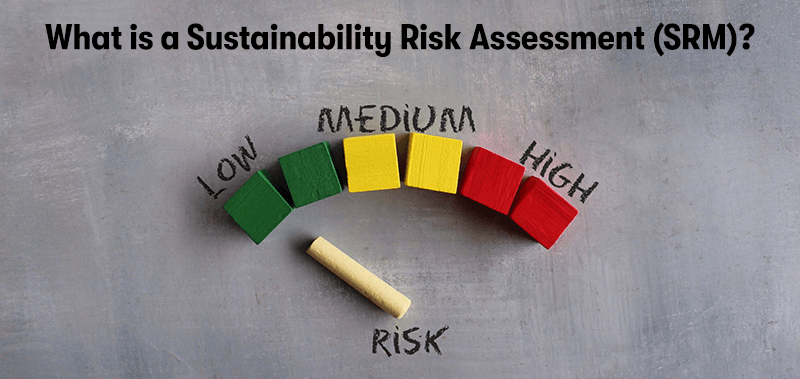
A Sustainability Risk Assessment is a process used to evaluate the potential risks associated with an organisation's activities' environmental, social, and governance (ESG) aspects. This assessment is typically part of a broader strategy for sustainable development and corporate responsibility. The main objectives of an SRM include:
Identifying Environmental Risks
This involves assessing the potential impact of an organisation's operations on the environment. This could include pollution, waste management, resource depletion, and impacts on biodiversity.
Evaluating Social Risks
This aspect assesses the impact of an organisation's activities on society. It includes issues like labour practices, community engagement, human rights, and health and safety concerns.
Governance Risks
This involves the evaluation of an organisation's governance structures, ethical practices, compliance with laws and regulations, and transparency in reporting.
Financial Implications
Understanding how these ESG factors can affect the financial performance and stability of the organisation. This includes assessing the potential for fines, lost business, or reputation damage due to unsustainable practices.
Long-term Viability
Considering the long-term risks and opportunities associated with climate change, resource scarcity, and changing social expectations. This aspect helps in aligning the business strategy with sustainable development goals.
Stakeholder Engagement
Engaging with stakeholders (such as customers, employees, suppliers, and the community) to understand their concerns and expectations regarding sustainability.
Compliance and Regulatory Risks
Evaluating risks related to non-compliance with existing and upcoming environmental and social regulations.
The outcome of a Sustainability Risk Assessment is typically a set of recommendations for mitigating identified risks and capitalising on opportunities to improve the organisation's sustainability performance. This can involve changes in operations, adopting new technologies, enhancing governance practices, or improving stakeholder engagement and communication. The SRM process is crucial for organisations seeking to operate responsibly, minimise environmental and social impact, and ensure long-term business resilience in a rapidly changing world.
Why Are Sustainability Risk Assessments Important for Businesses?
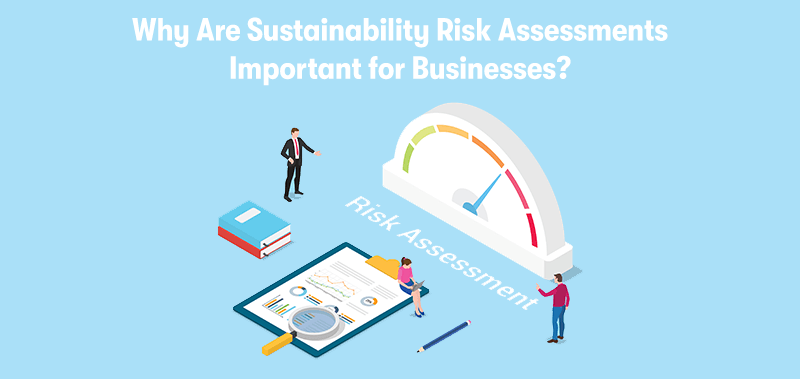
Sustainability Risk Assessments are crucial for businesses for several reasons:
Risk Management and Mitigation
SRAs help businesses identify and understand the potential environmental, social, and governance (ESG) risks they face. By proactively identifying these risks, businesses can develop strategies to mitigate them, potentially avoiding costly consequences like regulatory fines, operational disruptions, and reputational damage.
Regulatory Compliance
There is a growing trend of regulations and laws focusing on sustainability and ESG issues. SRAs enable businesses to stay ahead of regulatory changes, ensuring compliance and avoiding legal penalties.
Financial Performance and Investor Attraction
Investors are increasingly considering ESG factors when making investment decisions. A business that conducts SRAs and takes action on sustainability issues can be more attractive to investors, leading to better access to capital and potentially improved financial performance.
Market Competitiveness and Reputation
Consumers are becoming more conscious of sustainability issues. Businesses that demonstrate a commitment to sustainability can enhance their brand reputation, customer loyalty, and competitive advantage.
Operational Efficiency
SRAs often lead to identifying opportunities for operational improvements, such as resource efficiency, waste reduction, and energy savings, which can result in cost savings.
Long-Term Viability and Resilience
By identifying and addressing sustainability risks, businesses can increase their resilience to global challenges such as climate change, resource scarcity, and social shifts. This helps ensure long-term viability in a rapidly changing business environment.
Stakeholder Trust and Relations
Conducting SRAs shows stakeholders, including customers, employees, and the community, that a business is aware of and actively managing its impact on the environment and society. This can build trust and strengthen relationships.
Innovation and Market Opportunities
SRAs can also uncover new market opportunities, such as the development of sustainable products or services, which can drive business growth.
Alignment with Global Sustainability Goals
Engaging in SRAs aligns businesses with broader global sustainability efforts, such as the United Nations Sustainable Development Goals (SDGs), demonstrating a commitment to global societal and environmental issues.
In summary, Sustainability Risk Assessments are not just about managing risks; they are about seizing opportunities, enhancing operational and financial performance, building brand value, and ensuring long-term business resilience in a world where sustainability is becoming increasingly important.
Why is Sustainability Important for Businesses?
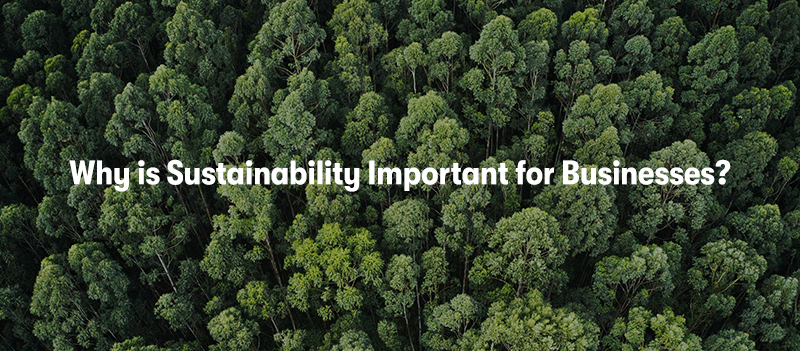
Sustainability is crucial for businesses for several reasons, spanning from ethical considerations to practical, financial, and strategic factors:
Long-term Viability
Sustainable practices help businesses operate and grow over the long term. This includes using resources more efficiently, which reduces costs, and adapting to changing environmental conditions, which ensures resilience.
Regulatory Compliance
Governments worldwide are implementing stricter environmental and social regulations. Adhering to sustainable practices helps businesses avoid penalties and legal issues associated with non-compliance.
Financial Performance
Increasingly, sustainable business practices are linked to improved financial performance. This can be due to cost savings from energy efficiency, waste reduction, and better resource management, as well as from tapping into the growing market of environmentally conscious consumers.
Investor Attraction
Investors are progressively focusing on sustainability. Sustainable businesses often attract more investment as they are perceived to be forward-thinking and better prepared for future challenges.
Brand Reputation and Customer Loyalty
Customers are becoming more environmentally conscious and often more loyal to brands committed to sustainability. This can lead to increased sales and customer retention.
Innovation and Competitiveness
Sustainability can drive innovation by pushing businesses to develop new, more efficient processes and products. This can create a competitive advantage in the marketplace.
Employee Engagement and Attraction
A commitment to sustainability can improve employee morale and attract talent, especially as more people seek to work for companies that reflect their values.
Risk Management
Sustainability helps identify and mitigate various environmental, social, and governance risks, which could have significant financial and reputational impacts.
Global Impact and Corporate Responsibility
Businesses have a role in addressing global challenges such as climate change, resource depletion, and social inequality. By embracing sustainability, businesses contribute to creating a more sustainable future for all.
Supply Chain Resilience
Sustainable practices can enhance supply chain resilience by encouraging diversity, ethical sourcing, and sustainable resource use, reducing the risk of disruptions.
Community Relations
Sustainable businesses often enjoy better relations with the communities in which they operate, as they are seen as responsible and contributing positively to local development.
In essence, sustainability is no longer a nice-to-have for businesses but a crucial aspect of their strategy and operations, impacting their long-term success, resilience, and reputation in an increasingly environmentally and socially conscious global marketplace.
How is a Sustainability Risk Assessment Carried Out?
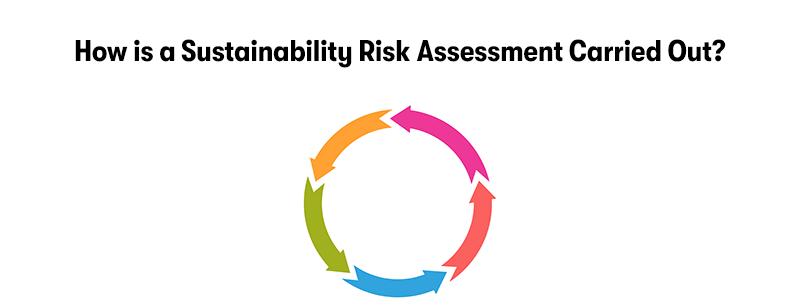
Carrying out a Sustainability Risk Assessment involves several key steps. The process is generally structured to systematically identify, analyse, and address the environmental, social, and governance (ESG) risks associated with an organisation's activities. Here's a breakdown of the typical stages involved in an SRA:
Define Scope and Objectives
Determine the boundaries of the assessment (e.g., specific projects, entire organisation, supply chain).
Set clear objectives for what the assessment aims to achieve, such as identifying key sustainability risks, compliance with regulations, or improving corporate responsibility.
Stakeholder Engagement
Identify internal and external stakeholders (e.g., employees, customers, suppliers, local communities).
Engage with these stakeholders to understand their concerns and expectations regarding sustainability.
Data Collection and Baseline Establishment
Collect relevant data on current sustainability practices, environmental impacts, social responsibilities, and governance structures.
Establish a baseline to measure future improvements.
Risk Identification
Identify potential sustainability risks. This can include environmental risks (like pollution and resource depletion), social risks (like labour issues and community impacts), and governance risks (like non-compliance with laws and ethical concerns).
Use tools such as SWOT Analysis (Strengths, Weaknesses, Opportunities, Threats), PESTLE Analysis (Political, Economic, Social, Technological, Legal, Environmental), or scenario planning.
Risk Analysis and Prioritisation
Assess the likelihood and potential impact of identified risks.
Prioritise risks based on their severity and the organisation's ability to influence them.
Risk Mitigation Strategy Development
Develop strategies to mitigate high-priority risks. This could include process changes, adopting new technologies, policy revisions, or stakeholder engagement strategies.
Consider opportunities for sustainability improvements that may emerge from risk mitigation strategies.
Implementation
Put the risk mitigation strategies into action.
This stage may involve changes in operations, training for staff, development of new policies, and more.
Monitoring and Review
Regularly monitor the effectiveness of the mitigation strategies.
Update risk assessment periodically to reflect changes in the organisation's operations, the external environment, or stakeholder expectations.
Reporting and Communication
Communicate the findings of the SRA and subsequent actions to stakeholders.
Transparency in reporting helps build trust and can enhance the organisation's reputation.
Continuous Improvement
Use the insights gained from the SRA process for continuous improvement.
Adapt strategies as necessary to respond to new risks or opportunities.
Each organisation may tailor these steps to fit its context, size, and industry. It's also important to integrate the SRA process into the broader corporate strategy and risk management framework to ensure that sustainability is considered in all aspects of the organisation's operations.
What is Included in a Sustainability Risk Assessment?
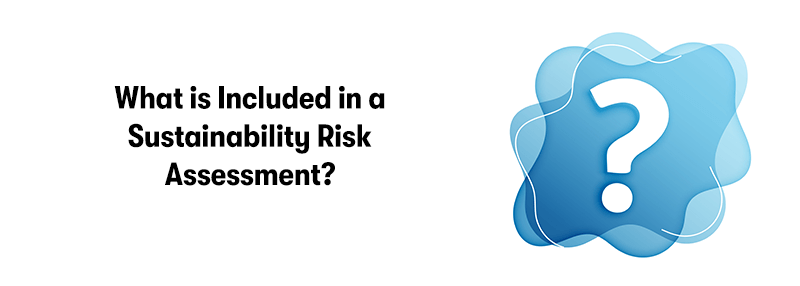
A Sustainability Risk Assessment typically includes several key components that help organisations evaluate and manage their operations' environmental, social, and governance risks. The main elements included in an SRA are:
Risk Identification
This is the first and crucial step where the assessment identifies potential sustainability risks. These risks can be categorised into three main areas:
Environmental Risks: Includes issues like climate change impacts, resource depletion, waste and pollution, biodiversity loss, and energy efficiency.
Social Risks: Encompasses aspects like labour practices, health and safety, community engagement, human rights, and customer satisfaction.
Governance Risks: Involves assessing the organisation's governance structure, compliance with regulations, ethical conduct, and transparency.
Data Collection and Analysis
Gathering relevant data to understand the current state of sustainability practices. This may involve:
- Environmental data (e.g., emissions, water usage, waste generation).
- Social data (e.g., employee turnover rates, community impact assessments).
- Governance data (e.g., compliance records, board structure).
Stakeholder Engagement
Understanding the perspectives and values of stakeholders such as employees, customers, suppliers, local communities, and investors. This can include surveys, interviews, and public forums.
Risk Assessment and Prioritisation
Evaluating the likelihood and potential impact of identified risks. This involves:
- Determining the severity and probability of each risk.
- Prioritising risks based on their potential impact on the organisation and stakeholders.
Impact Assessment
Assessing the potential positive and negative impacts of the organisation's activities on the environment, society, and governance aspects.
Legal and Regulatory Compliance Review
Checking for compliance with relevant environmental, social, and corporate governance laws and regulations.
Mitigation Strategies and Action Plans
Developing strategies to reduce, manage, or eliminate identified risks. This includes setting targets, implementing new policies or procedures, and allocating resources.
Monitoring and Reporting
Establishing procedures for ongoing monitoring of risks and the effectiveness of mitigation strategies. Regular reporting to internal and external stakeholders is also essential for transparency and accountability.
Review and Continuous Improvement
Regularly review and update the risk assessment to reflect changes in the organisation's operations, the external environment, or stakeholder expectations.
Integration with Corporate Strategy
Ensuring that the findings and actions from the SRA are integrated into the organisation's overall strategy and operations.
Documentation and Evidence Gathering
Keeping detailed records of the assessment process, findings, and actions taken is vital for internal audits, external reporting, and compliance purposes.
An SRA should be a dynamic and iterative process, adapting to new information, changing circumstances, and evolving stakeholder expectations. By including these elements, businesses can create a comprehensive view of their sustainability risks and develop effective strategies to address them.
What is ESG and Why is it Important?

ESG stands for Environmental, Social, and Governance, and it is a framework used to evaluate the impact of a company's operations in these three critical areas. The importance and relevance of ESG criteria have grown significantly as stakeholders, including investors, customers, and regulators, increasingly recognise that sustainable practices are essential for long-term business success and societal well-being. Here's a breakdown of each component and why they're important:
Environmental
This aspect assesses how a company performs as a steward of the natural environment. It includes factors like:
- Climate change policies and carbon emissions.
- Resource depletion, including water and energy use.
- Waste management and pollution.
- Deforestation and impact on biodiversity.
Importance: Environmental sustainability is critical as businesses significantly contribute to and mitigate climate change and environmental degradation. Companies with strong environmental practices can reduce regulatory risks, lower costs through efficient resource use, and meet the growing consumer demand for environmentally responsible products.
Social
This dimension evaluates how a company manages relationships with its employees, suppliers, customers, and communities. It includes:
- Labour standards and working conditions.
- Health and safety.
- Community engagement.
- Diversity and inclusion.
- Human rights and ethical supply chain practices.
Importance: Social responsibility is vital for building trust and maintaining good relationships with stakeholders. Companies that excel in social responsibility can attract and retain talented employees, improve their brand reputation, and avoid social risks that can lead to business disruptions or reputational damage.
Governance
This area focuses on a company's leadership, audits, internal controls, and shareholder rights. It includes:
- Board composition and structure.
- Executive compensation.
- Auditing and accounting standards.
- Transparency and reporting.
- Business ethics and corporate behaviour.
Importance: Good governance ensures accountability and transparency, which helps build investor and stakeholder trust. Companies with strong governance practices tend to be more resilient, are better at managing risk, and are more likely to achieve long-term sustainable growth.
Overall Importance of ESG
Investment Perspective: ESG criteria have become a significant factor in investment decisions. Investors increasingly seek to allocate capital to companies with strong ESG practices, recognising that these companies may offer better long-term returns and lower risks.
Regulatory Compliance: Many governments and international bodies are introducing regulations that require businesses to disclose ESG-related information. This trend underscores the growing importance of ESG in corporate compliance.
Risk Management: ESG factors are integral to identifying and mitigating a range of risks, including environmental disasters, social discontent, and governance scandals.
Corporate Reputation and Competitive Advantage: Companies with strong ESG credentials often enjoy a better reputation, which can be a significant competitive advantage in attracting customers and employees.
Contribution to Societal Goals: Businesses have a role in addressing global challenges such as climate change, inequality, and sustainable development. By focusing on ESG, companies contribute to creating a more sustainable and equitable society.
In summary, ESG is not just about corporate responsibility; it's a framework for creating long-term value for both the business and society. It helps companies navigate a rapidly changing business environment, manage risks, capitalise on opportunities, and meet the expectations of an increasingly conscientious stakeholder base.
What is Digital Sustainability?
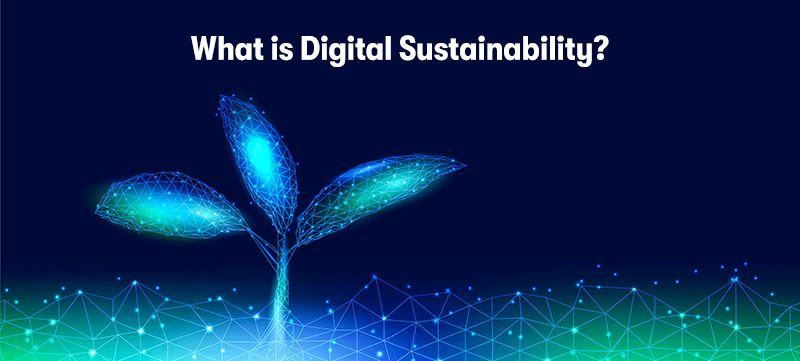
Digital sustainability refers to designing, implementing, and using digital technologies to support and enhance the long-term health and well-being of society, the economy, and the environment. This concept encompasses a range of practices and principles aimed at ensuring that digital technologies contribute positively to sustainable development. Key aspects of digital sustainability include:
Environmental Impact
Minimising the environmental footprint of digital technologies. This includes reducing the energy consumption and greenhouse gas emissions of data centres, networks, and devices and promoting the use of renewable energy sources in digital infrastructure.
Resource Efficiency
Ensuring digital devices and systems are designed for longevity, reparability, and recyclability. This approach helps to reduce electronic waste and the depletion of scarce resources used in electronic devices.
Accessibility and Inclusion
Making digital technologies accessible to all segments of society, thereby bridging the digital divide. This includes developing affordable technologies and ensuring that they are available and usable by people regardless of their economic status, location, age, gender, or disabilities.
Ethical Data Use
Implement practices that ensure data is used ethically, respect privacy, and avoid misuse of personal information. This includes adhering to regulations such as GDPR and developing frameworks for ethical AI.
Economic Sustainability
Leveraging digital technologies to support sustainable economic growth. This can include using digital tools to create new business models that are environmentally and socially responsible or to improve efficiencies in various sectors.
Social Impact
Assessing and addressing the social implications of digital technologies. This involves considering the effects of technology on employment, social interactions, mental health, and societal structures.
Education and Awareness
Promoting digital literacy and awareness about the sustainable use of technology. Educating users about the impact of their digital habits and how to make more sustainable choices is an important aspect of this.
Policy and Governance
Developing policies and governance models that support the sustainable development of digital technologies. This includes government regulations, industry standards, and corporate policies that promote sustainability in the digital realm.
Innovation for Sustainability
Using digital technologies to address environmental and social challenges. This can include developing digital solutions for climate monitoring, resource management, and sustainable agriculture.
Digital Workforce Sustainability
Ensuring that the workforce is prepared for the digital economy through training and education and that digital work environments are sustainable regarding work-life balance and mental health.
Digital sustainability is an evolving field, recognising that as digital technologies become more integral to all aspects of life and business, it's crucial to manage them in ways that support broader sustainability goals. It's about harnessing the potential of digitalisation to drive positive change while mitigating its negative impacts on the planet and society.
Where Can You Learn More About Digital Sustainability?
At Purple Griffon, we offer an ITIL® 4 Specialist Sustainability in Digital & IT (SDIT) training course. This course will help you to:
- Understand how to use the ITIL guiding principles to deliver value by creating sustainable digitally enabled products and services.
- Effectively address VUCA challenges through sustainable strategies, procurement, products and practices.
- Obtain a practical grounding in the key principles of sustainability.
- Conduct a complete cost-benefit analysis identifying potential risks and opportunities using best practice guidance.
Final Notes on Sustainability Risk Assessments
In conclusion, our exploration of sustainability in the business realm, particularly through Sustainability Risk Assessments and the broader ESG framework, underscores the critical role of these practices in modern corporate strategy.
Emphasising environmental, social, and governance aspects is not just ethically imperative but also strategically beneficial, offering risk mitigation, enhanced reputation, and long-term financial gains. The emergence of digital sustainability further highlights the evolving nature of sustainable practices, integrating technological advancements with environmental and social consciousness.
As we navigate a rapidly changing global landscape, the intersection of sustainability and digitalisation presents both challenges and opportunities. Businesses and individuals alike must be proactive and innovative in their approach, ensuring that our digital future is not just technologically advanced but also sustainable and inclusive for all.


